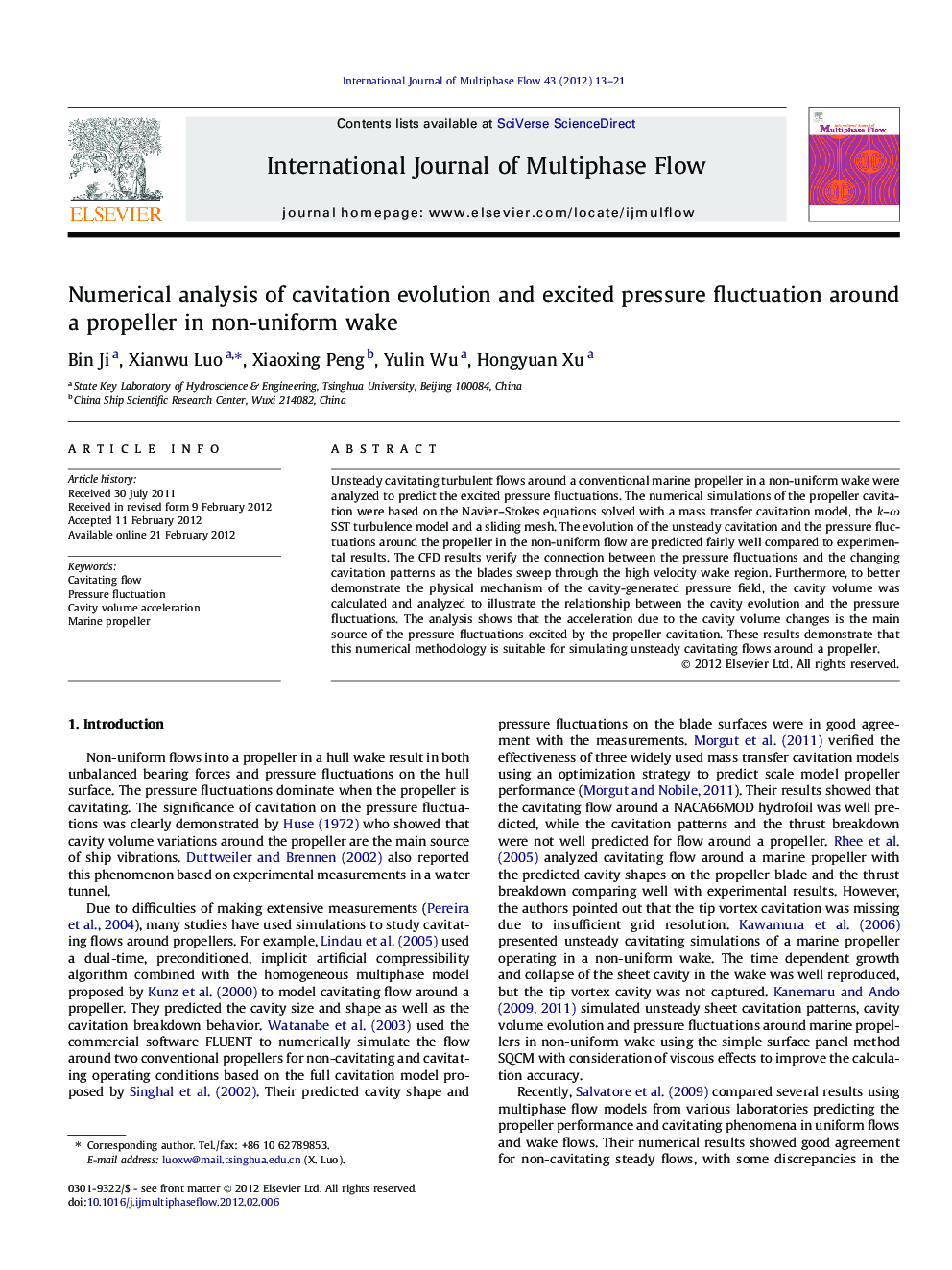| Article ID | Journal | Published Year | Pages | File Type |
|---|---|---|---|---|
| 666733 | International Journal of Multiphase Flow | 2012 | 9 Pages |
Unsteady cavitating turbulent flows around a conventional marine propeller in a non-uniform wake were analyzed to predict the excited pressure fluctuations. The numerical simulations of the propeller cavitation were based on the Navier–Stokes equations solved with a mass transfer cavitation model, the k–ω SST turbulence model and a sliding mesh. The evolution of the unsteady cavitation and the pressure fluctuations around the propeller in the non-uniform flow are predicted fairly well compared to experimental results. The CFD results verify the connection between the pressure fluctuations and the changing cavitation patterns as the blades sweep through the high velocity wake region. Furthermore, to better demonstrate the physical mechanism of the cavity-generated pressure field, the cavity volume was calculated and analyzed to illustrate the relationship between the cavity evolution and the pressure fluctuations. The analysis shows that the acceleration due to the cavity volume changes is the main source of the pressure fluctuations excited by the propeller cavitation. These results demonstrate that this numerical methodology is suitable for simulating unsteady cavitating flows around a propeller.
► Cavitating flow around propellers in non-uniform wake is studied. ► Evolution of cavitation and pressure fluctuation are predicted well compared to experiments. ► The relationship of cavity volume and pressure fluctuation is discussed. ► The physical mechanism of excited pressure by cavitation is illustrated.
